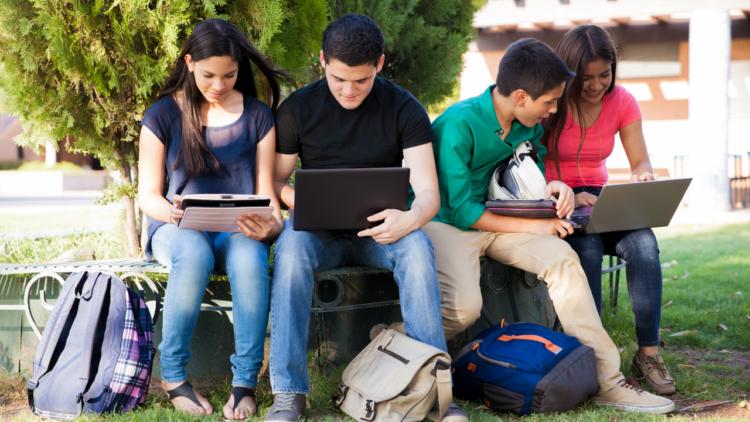Schools are like a family; a crisis brings out the best and the worst of the relationship. This pandemic highlighted many of the problems bubbling within low income schools, even when the staff is nurturing and dedicated. I’ve spent the majority of my teaching career at a rural school, working with students who have no one to help with their homework, whose telephone numbers constantly change, and whose families have to choose between buying food or paying for wi-fi. Many students spend their parent’s cell phone minutes buying data to work on online homework. This time of social distancing underscored the great divide between the haves, and the have nots. During this unprecedented moment in history, I implore school systems to take time and evaluate their practices.
When planning to close, access to food was the first crisis poorer schools faced. Many of my students have parents who work double shifts; the only prepared meal their child may get is from the school cafeteria. One of the first things the nurse does when a student goes to the office complaining of stomach pain is to offer them a granola bar. They are so accustomed to hunger, they can’t differentiate between it and the stomach flu. Fortunately, the superintendent and cafeteria personnel developed a plan so that any child in the Riverbank Unified School District can get a meal during the crisis. Feeding our children is the least we can do to show them that they are important.
Access to supervision is another problem. Who knew that during a crisis of this magnitude, undocumented farm workers would be considered “essential workers?” Because so many of my students were in charge of teaching younger brothers, sisters, nieces, and nephews, I uploaded short videos to demonstrate specific websites that could be used to create lessons. Giving students a computer, and not showing them how to use it effectively to learn at home, helps absolutely no one.
That brings me to the biggest issue my students are facing; access to technology. There are many hurdles they have to overcome. They have slow wi-fi or no wi-fi. I use technology a lot in my ELD class, and during this time of social distancing, I continue to use the websites that we have utilized all year including Newsela, Listenwise, Screencastify, Study Sync, Ted-Ed, and Quizlet. What I have learned from my 37 years as a teacher, is that students who are accustomed to failing, will give it one try. Then, they give up. Unfortunately, the pandemic came at us so fast, many teachers did not have time to provide the infrastructure needed for students to utilize technology and meet curriculum standards. I am hopeful that when we return to the classroom, we will be able to implement real change that provides students with the tools they need to be successful, independent learners. We have to ensure that we don’t just throw them into the world wide web, and ask them to swim.
Another huge realization one makes as a teacher, is that students do not come to school only to pass tests, and move on to the next grade. Students come to school to see people like themselves; their friends are a mirror of what they believe to be important. Friends provide an escape from a difficult home life, low self esteem, or circumstances beyond their control. Each high school student is a social influencer in their own right. “Did you see my Tik-Tok?” students ask as they walk into the classroom. My approval, and praise, makes them want to come back to read one more article, or write one more paragraph. I’m so worried for those individual students who need that constant encouragement. How will we measure the strain of social isolation on the developing teenager?
There are many things I would like to see when we return. Hand sanitizer in every classroom. Cleanliness stations in every cafeteria. Sanitary wipes provided to all teachers. Increased high speed internet in rural locations. Food closets in all schools so that low-income families have access to fresh fruits, vegetables, and protein. I’m so inspired by my colleagues, like the calculus teacher who uses Zoom on a Friday night to explain AP level math. Maybe we should provide flex time within a teacher’s day, so that two hour Friday night Zoom lesson is accounted for.
Fortunately, I work in a school system that considers all stakeholders to be members of a large family concerned with making sure all students have the highest quality education. Students during this crisis sacrificed so much to ensure that all of our families remain safe and to “flatten the curve.” Spring sports, prom, Grad Night, and graduation are milestone events my students have given up so that others can live. Let’s use the Pandemic of 2020 to rethink education and transform our school system.
Mary Lopez
Latest posts by Mary Lopez (see all)
- Reflexiones de una Maestra Sobre las Escuelas Públicas Después de la Pandemia - April 21, 2020
- Reflections of a Teacher on Public Schools After the Pandemic - April 15, 2020

